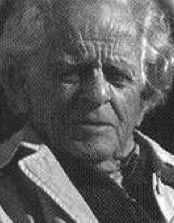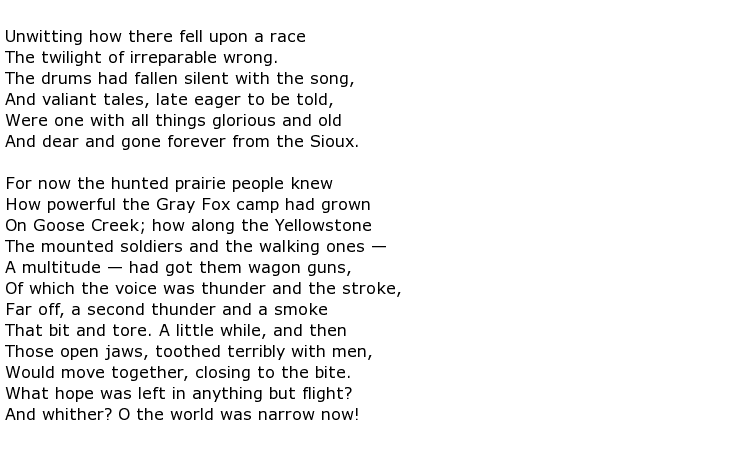 John Gneisenau Neihardt was a US poet whose historical fascination with the period in his country’s history when the frontiersmen were coming to the end of their mass settlement of the great plains made him an ethnographer. His specific area of interest was the effect on the indigenous people who were often displaced by white settlers. His famous book Black Elk Speaks, written in 1932, was a compilation of stories about those times and the many interviews that he had with the great medicine man of the Sioux nation by that name.
John Gneisenau Neihardt was a US poet whose historical fascination with the period in his country’s history when the frontiersmen were coming to the end of their mass settlement of the great plains made him an ethnographer. His specific area of interest was the effect on the indigenous people who were often displaced by white settlers. His famous book Black Elk Speaks, written in 1932, was a compilation of stories about those times and the many interviews that he had with the great medicine man of the Sioux nation by that name.
He was born on the 8th January 1881 in Illinois. Following a family move to Nebraska he completed his education at the college there, graduating in 1897. He had already shown great promise as a poet from the age of 12 and, on leaving college, he took up teaching for a while in small, rural schools. His first published work came out in 1899, a mystical collection of poems called

This would be the path that he would lead in later life, following ancient faiths such as Hinduism.
Anxious to gain knowledge on Indian life and culture Neihardt moved to Bancroft the following year. He based himself at the edge of a Reservation, studying this peace-loving tribe while editing a local newspaper called the

He was inspired by his surroundings and a second collection of poetry was published, a set of romantic poems written in free verse called

His fame spread to Europe and a Paris-based woman named Mona Martinsen was so enamoured with his work that a long-running correspondence between the two ended in marriage when she moved to Nebraska.
Neihardt had a vision to document the story of the cataclysmic changes that befell the Great Plains beginning with the arrival of fur traders and ending with the notorious Wounded Knee Massacre of 1890 where the Lakota nation were virtually wiped out. Tribes had been practicing a ritual called the “Ghost Dance” where living members could interact with the spirits of dead forefathers and this was one of the ancient traditions that was outlawed after this tragic event. Neihardt wrote a cycle of epic poems to cover this whole section of history.
During his extensive travels, often using an open boat, he found former cavalrymen as well as Indian survivors who were able to tell their stories but it is those of the holy man Black Elk that had the most effect on him. The two men became close friends over many years after their first meeting in 1930 and the above-mentioned book was the significant result of these recollections.
It is not surprising to find that much of Neihardt’s work concerns the trials and tragedies that befell Native Americans in the late 19th century and a typical piece is his poem The Twilight. An extract is reproduced here:

His most celebrated work

was translated into other languages, including German in 1953, and it was re-issued in a number of new editions throughout the 20th and into the 21st century. It was inevitable that such a learned man should be in demand on campuses and he served in Nebraska, St Louis and other places as professor of poetry or poet in residence.
John Gneisenau Neihardt survived a car accident which killed his wife in 1958 and lived to the grand old age of 92. He died in Columbia, Missouri on the 24th November 1973.

